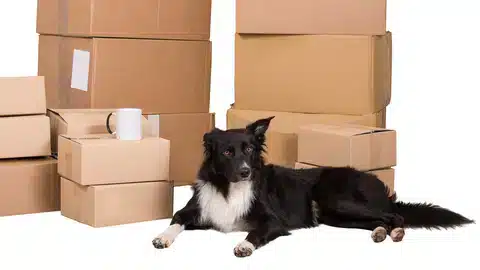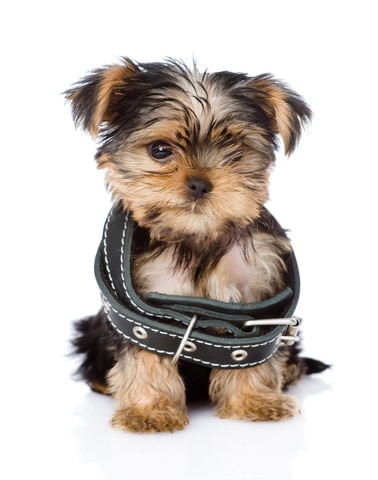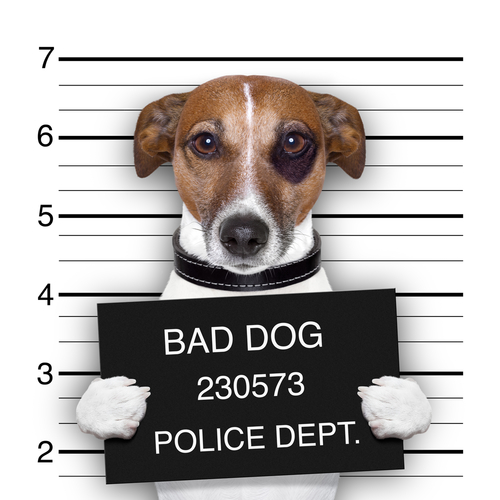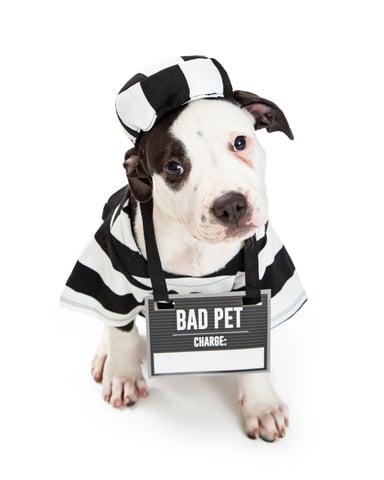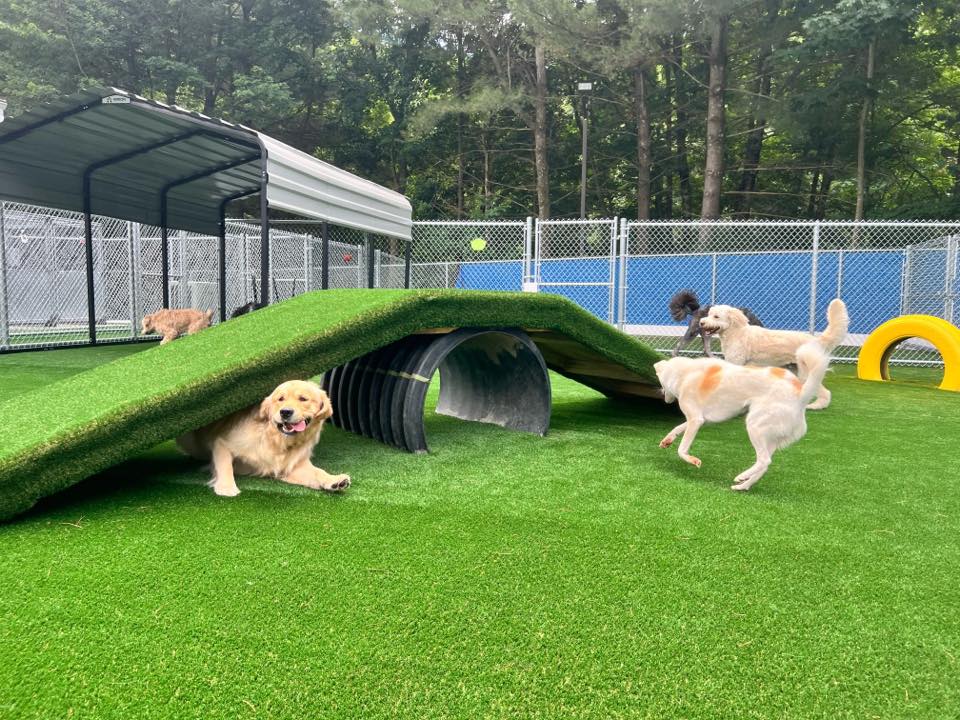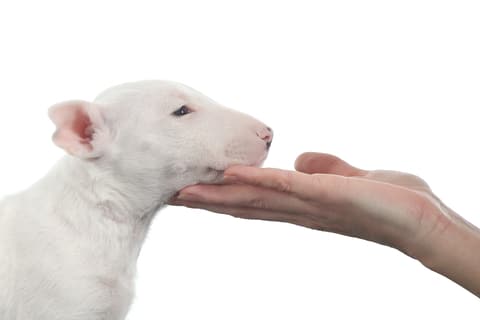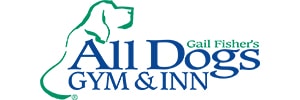Training helpful behaviors for your dog's comfort and well-being.
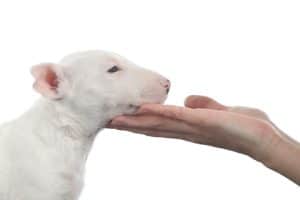
Brio, my two-year-old Basset Fauve de Bretagne, pulled a groin muscle (iliopsoas). To help treat this, I’ve been doing physical rehab with stretching and weight distribution exercises. Brio’s prior training for different manners behaviors has not included anything that would help with this situation.
The two main behaviors I need him to perform to help strengthen him are stand still and a chin rest – put your chin on my hand and hold it there. Once he’s standing, I can shape him to move is front feet forward or rear feet back wards to shift his weight using a variety of fitness items for exercising dogs. The chin rest allows me gently guide his head forward while holding his feet in place. There are other recommended behaviors that will take a little more time to train, but these two form the basis for all the others.
This experience has pointed out to me the importance of a brand new course that we just started offering at All Dogs Gym, called Cooperative Care. The timing of this new course has nothing to do with Brio’s injury, and I wish we had offered it, and that we had taken it when Brio was a puppy.
The focus of Cooperative care is on helping a puppy or dog develop confidence and comfort being examined at the veterinarian, being groomed, and happily tolerating different husbandry we routinely perform on our dogs—brushing, ear cleaning, nail trimming and the like. The behaviors covered in this class include stand still and the chin rest—which I wish I had taught Brio when he was a puppy. It’s also designed to help desensitize a dog that may have had a previously unpleasant experience, or simply is frightened at the veterinarian’s.
Cooperative Care is just one of the new courses we’re offering, especially helpful for young dogs and puppies. Another one is called Great in the Crate, which includes games to acclimate a dog or puppy to not only get into the crate happily, but to rest and relax comfortably. Crate training is useful for so many things.
Of course it’s helpful for housetraining puppies, and managing them through teething periods. But focusing on relaxation in a crate is useful when traveling, if your dog needs to stay overnight at a veterinarian’s, and if you participate in dog sports. Not just for puppies, Great in the Crate can help an older dog get acclimated to being kenneled, and may even be helpful relaxing dogs that may have separation anxiety.
Dog training classes have changed a lot over the many years that I’ve been training. The focus for many years was on simply teaching “obedience” – come when called, stay when told, and the like. While manners classes still cover these important responses, there is so much more available to dog owners who are looking for fun, useful activities to do with their dogs.
